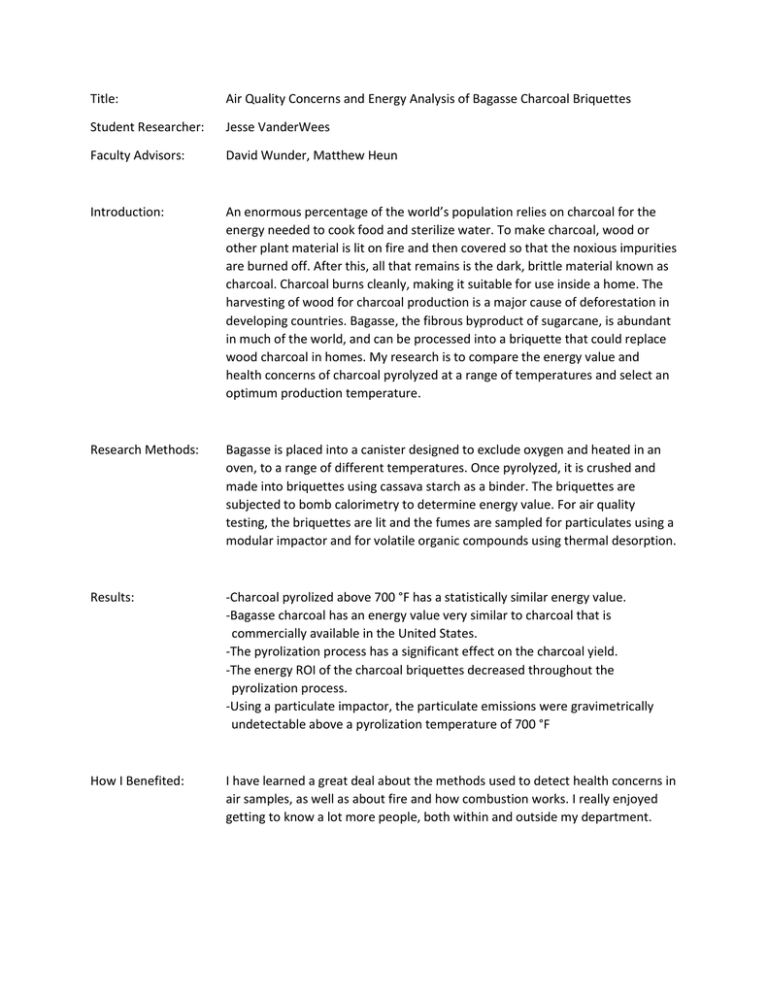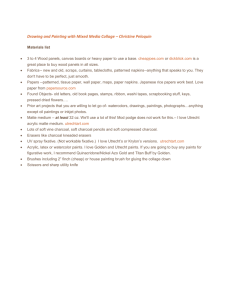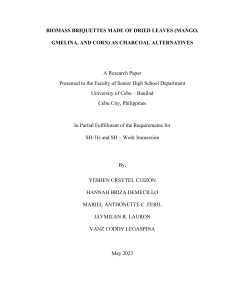Title: Air Quality Concerns and Energy Analysis of Bagasse Charcoal Briquettes
advertisement

Title: Air Quality Concerns and Energy Analysis of Bagasse Charcoal Briquettes Student Researcher: Jesse VanderWees Faculty Advisors: David Wunder, Matthew Heun Introduction: An enormous percentage of the world’s population relies on charcoal for the energy needed to cook food and sterilize water. To make charcoal, wood or other plant material is lit on fire and then covered so that the noxious impurities are burned off. After this, all that remains is the dark, brittle material known as charcoal. Charcoal burns cleanly, making it suitable for use inside a home. The harvesting of wood for charcoal production is a major cause of deforestation in developing countries. Bagasse, the fibrous byproduct of sugarcane, is abundant in much of the world, and can be processed into a briquette that could replace wood charcoal in homes. My research is to compare the energy value and health concerns of charcoal pyrolyzed at a range of temperatures and select an optimum production temperature. Research Methods: Bagasse is placed into a canister designed to exclude oxygen and heated in an oven, to a range of different temperatures. Once pyrolyzed, it is crushed and made into briquettes using cassava starch as a binder. The briquettes are subjected to bomb calorimetry to determine energy value. For air quality testing, the briquettes are lit and the fumes are sampled for particulates using a modular impactor and for volatile organic compounds using thermal desorption. Results: -Charcoal pyrolized above 700 °F has a statistically similar energy value. -Bagasse charcoal has an energy value very similar to charcoal that is commercially available in the United States. -The pyrolization process has a significant effect on the charcoal yield. -The energy ROI of the charcoal briquettes decreased throughout the pyrolization process. -Using a particulate impactor, the particulate emissions were gravimetrically undetectable above a pyrolization temperature of 700 °F How I Benefited: I have learned a great deal about the methods used to detect health concerns in air samples, as well as about fire and how combustion works. I really enjoyed getting to know a lot more people, both within and outside my department.




